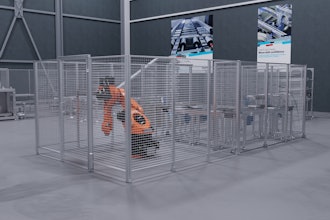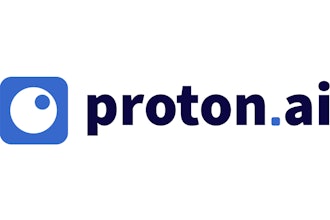
The field of artificial intelligence has been around since 1956, when a workshop at Dartmouth first identified and coined the term.
For the past 60 years or so, the technology around AI has not been mature enough to sustain the many dreams both scientists and businesspeople have come up with in its application. We have reached the time when those dreams can be built, and the businesses who are aware are using this to their advantage. Within the distribution industry, there is a plethora of opportunity to innovate the many necessarily complex and intricate processes. Specifically, within complex sales, there are many opportunities to translate distribution’s extensive data into information and this information into knowledge.
Data to Information
The first of these are processes around data entry. When purchase orders (POs) are received by customer service representatives (CSR or Reps), they are often emailed as PDFs, JPEGs or Excel files. Formats like PDF provide limited to non-existent copying features and, even when they can be pasted, the information often needs to be re-organized before entry. Furthermore, these are rarely formatted in such a way that they can be directly imported into Enterprise Resource Planning (ERP) software and therefore require the Reps to manually type them in. This can significantly decrease Reps’ productivity time, especially when an order includes hundreds of line items. This inevitably invites the many unfortunate effects of manual data entry. Just to name a few, these include typos, inaccuracies and employee fatigue.
Thanks to recent advancements in AI, document entry and data entry no longer require man hours and mind-numbing typing. These processes can be augmented with AI powered automation. Amazon’s Textract is one of the many Optical Character Recognition (OCR) tools recognized as an industry standard and available today on the open market. OCR falls under the umbrella of Computer Vision, which includes the AI technologies focused on a machine’s ability to process visual data such as picture and videos. OCR is the ‘eye’ of AI. Amazon’s Textract uses machine learning to process and translate text and charts on visual documents, such as PDFs, into usable data. This means that a PO with hundreds of line items can be translated to a digital format in just seconds, relieving Reps of the need to hand-jam them into the system, and freeing up more time to focus on customers.
Information to Knowledge
Although the use of computer vision addresses a major challenge in automation, without the application of industry knowledge, these benefits cannot be fully realized. The combination of computer vision with other technologies allows digital information, outputted by OCR, to be processed to form knowledge. Data is not inherently information; information is not inherently knowledge; and knowledge is not inherently wisdom. Extracting information from our data is a good start, however, if we want to recognize the full capabilities of machine learning, we need to apply industry specific models to this data. Applying industry knowledge allows for the formation of context, and this context can be used by employees to make decisions, identify patterns and execute informed critical thinking.
This is where search algorithms come into play. Data entry and retrieval technologies, such as OCR, efficiently turn PDF data into digestible information through ‘reading’ documents. Search algorithms can analyze this information along with additional industry resources to abstract knowledge. Machine learning algorithms can use mathematical models to numerically represent contextual data. These models can be built into machine learning pipelines to process contextual data quickly and efficiently. Natural Language Processing (NLP) is a standard machine learning model with the ability to identify and classify words. This classification can be used to create meaning and translation. Term Frequency- Inverse Document Frequency (TF-IDF) is one such model that evaluates the frequency of a single word against its frequency within the whole document. TF-IDF, and other search algorithms, can be used to analyze a material description or customer information and search within the whole ERP database to identify matches. These models can also be used to analyze a material description against other industry documents such as catalogs, abbreviation mappings, units of measure converters, and other documents with industry information. The comparison between a specific piece of information against the many industry resources available allows for the recognition of similarity. A machine that knows “ can mean inch, and that “EA” means each, can use this broader translation to identify that material in another system. These similarities can be calculated into predictions which can be relayed back to the user as knowledge.
The augmentation of industry knowledge is an opportunity to improve challenges with hiring young and inexperienced talent, sales talent that lacks the depth of expertise from technical experience, and the extensive training time needed to educate teams on industry terms, abbreviations and company specific codes. By augmenting material and customer knowledge, new and inexperienced talent can quickly and efficiently make informed decisions to improve customer experience, return quotes quicker, process orders faster and communicate using accurate, live ERP data. Experienced employees will enjoy the relief of automating the manual and mind-numbing tasks and the ability to interact with intelligent analysis for the optimization of their selling strategy. While improving customer and employee experience is valuable in and of itself, augmentation is an important process of the digital transformation strategy.
Salesforce forecasts a 139% increase in automation within sales processes between 2020 and 2023. The age of AI is fast approaching and, thankfully, it is not expected to look like a scene from Terminator. With intelligent automation assisting, new, young, inexperienced and veteran employees all have access to an intelligent digital assistant ready to empower them and maximize efficiency every step of the way.
Kathleen Taggart is a GTM strategist for intelligent automation at DataXstream.






















